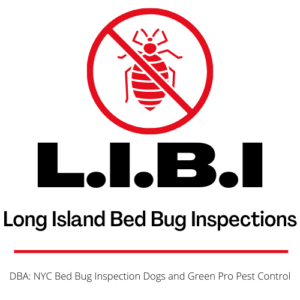What does all of this have to do with bed bugs and pest control? Well, people living in apartments and multi-unit highrises face some unique challenges when it comes to pests. Living in close proximity to other families can often make it harder to avoid an invasion of bed bugs, and when a colony sets up camp in one home the infestation and easily migrate to surrounding units. For those living in multifamily buildings the rules of combat for bed bugs are slightly different, and it’s worth taking the time to review some tips to help apartment dwellers keep their homes free from bed bugs.
Know Your Rights and Responsibilities
First, before we get to our tips on preventing possible bed bug infestations, we should take a moment to review your landlord and/or co-op board’s responsibilities when it comes to bed bugs and pest control.
-
Renters and Landlords – The landlord is responsible for eradicating any and all bed bug infestations once they have been identified. When a tenant reports signs of a bed bug problem the landlord should follow up with a thorough inspection of the surrounding apartments. This inspection should cover any units connected horizontally and vertically to the reporting tenants apartment, moving along in an orderly fashion until reaching ‘clean’ units. Once the affected units have been identified licensed pest control services should be brought in to deal with the infestation.
Landlords who fail to thoroughly inspect the surrounding apartments if an infected unit can be found liable for negligence New York’s housing court.
-
Owners and Co-Op Boards – Co-op boards have the same responsibilities as landlords, and are required to perform similar inspections of adjacent and connected units once a bed bug problem has been reported. Co-op boards and property managers should be particularly stringent in this regard as failure to proactively deal with a bed bug infestation can adversely effect property values and may lead to greater cleanup costs for the condo association and the tenants.
Securing the Battlements
While landlords and co-op boards are responsible for basic pest control there are steps tenants can take to minimize the risk of a bed bug invasion. Working on your own, or with the help of a licensed exterminator, follow these tips to help guard your home from an influx of unwanted bed bugs.
-
Dusting with Diatomaceous Earth – Diatomaceous earth makes for an effective, if not entirely fool proof, barrier against bed bugs. Apply diatomaceous earth dust along potential bed bug crawling spaces such as cracks and crevices in baseboards and moldings, around radiators, and any place service lines (gas, electric, cable, etc) enter the apartment. Be sure to also treat the areas behind light switches and electrical outlets. When a bed bug crosses the dusted barrier the diatomaceous earth acts like miniature razor wire, cutting the bug open and exposing it to infection and dehydration.
-
Seal after You Dust – After you have dusted the common areas seal up any cracks with sealant caulk. Be sure to use sealant caulk and not regular caulk for this procedure. Sealant caulk, as well as diatomaceous earth, can be found in most good hardware stores.
-
Spray the Perimeters – Finally, you can spray the along the treated baseboards and moldings with non-professional grade insecticide. It should be pointed out here that over the counter insecticides have a very limited effectiveness against bed bugs, and this final step should not be seen as a guarantee against a possible bed bug incursion.
Early Warning Systems
Early detection is key to eradicating any bed bug infestation. It only takes a couple of stray bed bugs riding into your apartment on a backpack or pants leg to lay the groundwork for a full scale invasion. So the sooner you know you have unwanted guests the sooner you can get a licensed exterminator in to eradicate the colony. There are a couple of simple early warning systems you can set up in any apartment or condo to give you both peace of mind and a jump on self defense.
-
Bed Bug Traps – Bed bug traps can be placed under furniture legs and bed posts. These traps are typically coaster-shaped plastic dishes coated with talc, making them too slippery for bed bugs to crawl out of once they’re caught. Regular inspection of the these traps will help you spot any early signs of a bed bug invasion.
-
Passive Bed Bug Monitors – These are essentially adhesive backed cardboard strips that can be placed in bedrooms and living areas to help detect the presence of bed bugs. Check the strips at least once a month, looking for blood stains or fecal matter left by feeding bed bugs.
-
Active Bed Bug Monitors – Active bed bug monitors use heat to attract bed bugs, trapping them on a glue-strip interior. While these traps do work, they can be somewhat expensive over time. The heating pads that attract the insects are single use, and must be replaced after 8 – 10 hours of use. That being said, these can be useful if you suspect the presence of bed bugs and need proof for a doubting landlord.
Be Cautious in Common Areas
If you find out that there is possible bed bug problem in your building you’ll want to take some precautionary measures. Common areas, like laundry rooms, should be treated with caution. Bed bugs and their eggs can survive cold water washes. So if you suspect a problem wash your laundry at the hottest setting and tumble dry for at least an hour at top temperature. Avoid the folding tables and take your finished laundry back to your apartment to fold.
Storage areas should also be treated with caution. Anything you have stored in the provided areas should be inspected for bed bugs, and if clean should be packed in resealable plastic bags or airtight tubs to prevent any possible cross migration from items belonging to other tenants.
Families living in apartments and condos make up the largest part of New York City’s population, and for them bed bugs can be a very real nightmare. Bed bugs can easily migrate from one unit to another through floorboards and electrical conduits. They can also hitch a ride on clothing and backpacks as they search for more rewarding hunting grounds. If you live in one of NYC’s many multifamily buildings these tips will hopefully give you the tools you need to better protect yourself from possible bed bug invasions. Above all, remember your rights as a tenant and your landlord’s responsibilities as regards maintaining a clean and bed bug free environment for you and your family.
Published by Scott Palatnik
If you believe you’ve brought bed bugs into your home or office, give us a call, we can help!
Now with 2 locations. On Long Island @ 516-619-6149, or in NYC @ 212-299-9186
We are Long Island Bedbug Inspections.
Your Bedbug Inspection, and Elimination solution.


